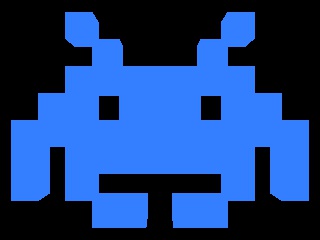This tutorial introduces the basic steps to superimpose an object, i.e. a mesh, on top of an image by using the SICAD class and its methods.
Just have a look at the following commented, ready-to-go, code snippets!
Default easy-peasy SICAD
std::unordered_map< std::string, std::string > ModelPathContainer
Definition: SICAD.h:33
std::multimap< std::string, ModelPose > ModelPoseContainer
Definition: Superimpose.h:25
If instead you want to provide your own OpenGL shader files the code changes just a tiny bit: you just have to provide two more paramenters to the the SICAD constructor.
Use your own OpenGL shaders in SICAD
std::unordered_map< std::string, std::string > ModelPathContainer
Definition: SICAD.h:33
std::multimap< std::string, ModelPose > ModelPoseContainer
Definition: Superimpose.h:25
Here are the shaders and the Space Invaders mesh model:
- Model vertex shader
- Textured model vertex shader
- Model fragment shader
- Background vertex shader
- Background fragment shader
- Space Invader fiend
⚠️ The four shaders must have the following exact names:
- shader_model.vert for the model vertex shader
- shader_model_texture.vert for the textured model vertex shader
- shader_model.frag for the model fragment shader
- shader_background.vert for the background vertex shader
- shader_background.frag for the background fragment shader
Result + Next
You should get something like this:

👾
You can now proceed to the next tutorial: how to add a background!
 1.8.14
1.8.14